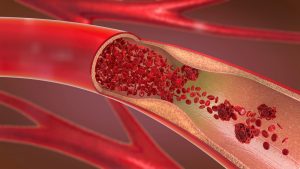 There’s a lot more to poor circulation than cold hands and feet. The truth is that those symptoms may only be the tip of the iceberg.
There’s a lot more to poor circulation than cold hands and feet. The truth is that those symptoms may only be the tip of the iceberg.
Cold hands and feet may not even indicate circulatory problems. In some cases, you may not even notice circulatory issues until a more serious problem has emerged. In fact, poor circulation is often the result of a more severe health issue.
Advertisement
An efficient circulatory system is required to distribute blood, oxygen, and nutrients throughout your body. In some cases, when blood flow is reduced, you may feel symptoms. In other cases, you might not, which is why it’s important to stay on top of your health.
The most common symptoms of poor circulation are tingling, numbness, throbbing or stinging pain, and cramps. Men may also experience erectile dysfunction.
Poor circulation, however, is likely the result of an underlying issue. Some of the main conditions that lead to symptoms include:
Peripheral Artery Disease (PAD): You’re most likely to feel the symptoms of PAD in your legs, which is caused by the narrowing of blood vessels and arteries. PAD is generally associated with atherosclerosis (arterial plaque buildup) and may boost stroke risk if unaddressed.
Blood Clots: Blood clots block blood flow either partially or entirely and can occur anywhere in the body.
Varicose Veins: Varicose veins are generally the result of nerve failure that causes veins to appear engorged, knotty, or lumpy. They are most common in the legs and can compromise efficient blood flow.
Diabetes: Diabetes can also impair circulation that leads to pain and cramping.
Advertisement
Obesity, as well as a condition called Raynaud’s disease, are also causes of poor circulation.
To improve circulation and improve vein health, you’ll need to address any underlying conditions. This is likely going to require a trip to the doctor’s office.
In the meantime, you can try to address your circulation issues with compression socks, keeping your feet elevated after standing, exercising, and following treatment protocols for underlying conditions.
